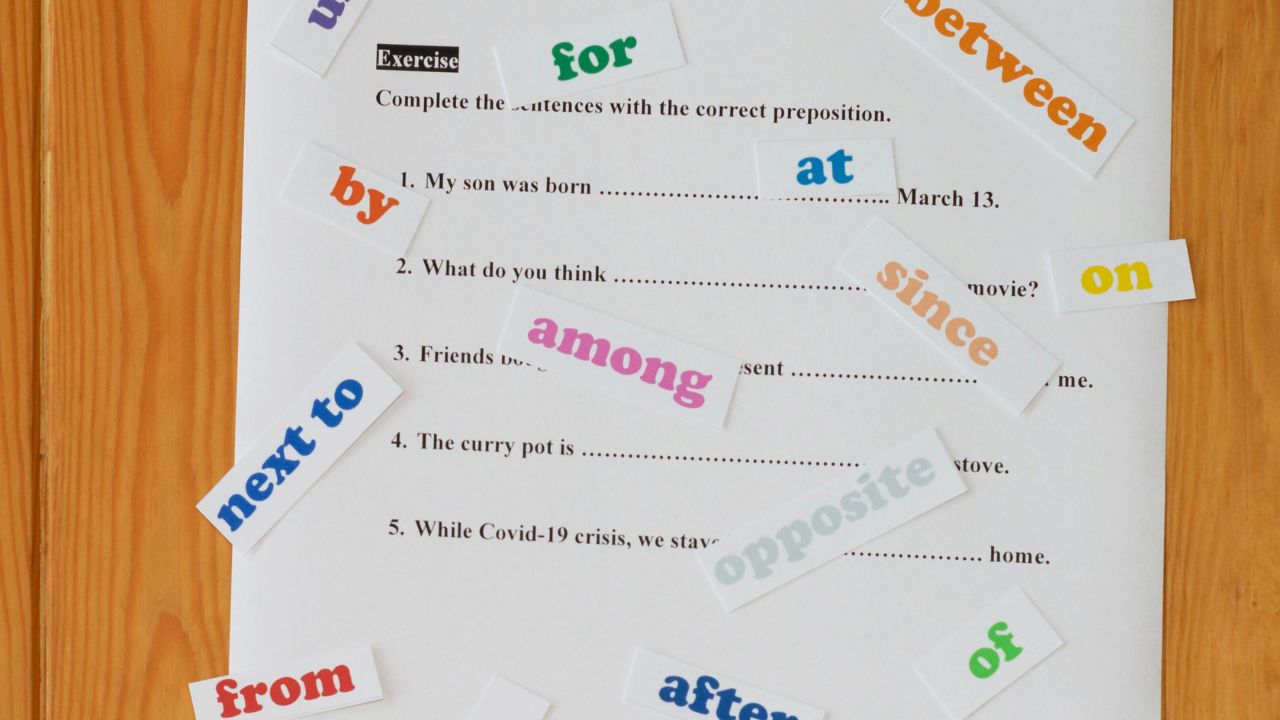Table of Contents
Are you struggling to understand the proper use of prepositions in your writing? Don’t worry, mastering prepositional phrases is easier than you think! Understanding how prepositions work and the different types of prepositional phrases can elevate your writing and help you communicate more effectively. In this guide, we’ll explore 20 easy examples of prepositional phrases that will help take your writing to the next level. So let’s jump right in!
Prepositional Phrases
Prepositional phrases are an essential component of any well-written sentence. They modify a noun or verb by providing additional information about its relationship to other elements in the sentence. Prepositions themselves are words that indicate location, direction, time, and manner.
There are three main types of prepositional phrases: adverbial, adjectival and nominal. Adverbial prepositional phrases describe how an action is done while adjectival prepositional phrases describe characteristics of nouns or pronouns. Nominal prepositional phrases function as nouns within sentences.
The key to using prepositions correctly is to understand their relationships with other elements in the sentence. For example, if you’re describing a location using a preposition like “in”, it’s important to specify exactly where that location is – otherwise your reader may become confused.
When constructing sentences using prepositional phrases, it’s also important to avoid overusing them or making them too complex for readers to follow easily. Instead, use simple and concise language that conveys your meaning clearly and effectively.
By mastering these easy examples of prepositions and understanding the different types of prepositional phrases available at your disposal, you’ll be able to enhance your writing style significantly!
Also Read: Narrative Essay Examples: Inspiring Stories That Showcase the Power of Personal Narration
Types of Prepositional Phrases
Prepositional phrases come in different types, each serving a specific purpose. The three main types of prepositional phrases are adverbial, adjectival, and nominal.
Adverbial prepositional phrases modify verbs by providing information about time, place or manner. For example, “He drove his car to the store” – “to the store” is an adverbial phrase that tells where he drove his car.
Adjectival prepositional phrases describe or modify a noun or pronoun by telling which one(s) or what kind of thing they are referring to. For instance: “The man with glasses is my teacher.” – “with glasses” describes the man who is being referred to.
Nominal prepositional phrases function as nouns; they can be used as subjects, objects of verbs and complements. They help give context to sentences and provide more information about their meaning. Take for example: “After school activities can be fun.” – “After school” functions as a noun phrase that refers to activities that happen after school hours.
Understanding these different types of prepositional phrases will improve your writing skills as you use them correctly in your sentences.
How to Use Prepositional Phrases
Using prepositional phrases can be a bit tricky, but with some practice and patience, you’ll soon master them. Here are some tips on how to use prepositional phrases effectively.
It’s important to understand the role of prepositions in our language. Prepositions show the relationship between two words or ideas, such as location (in/on/under), time (before/after/during), possession (of/by/about) and more.
When forming a prepositional phrase, start with the preposition followed by an object – which could be a noun or pronoun – and then add any necessary modifiers like adjectives or adverbs. For example: “In the morning” – “in” is the preposition; “the morning” is its object.
Prepositional phrases can function as adjective or adverbial complements in sentences. As an adjective complement they modify nouns e.g., “The woman in red dress arrived”, while as an adverbial complement they modify verbs e.g., “He ate dinner before leaving”.
It’s also important to pay attention to placement when using prepositional phrases in your writing. They should always come immediately after the noun or verb they’re modifying without creating ambiguity within your sentence structure.
By understanding these basic principles of how to use prepositional phrases correctly, you’ll have no trouble incorporating them into your writing seamlessly!

20 Easy Examples of Prepositional Phrases
Prepositional phrases are an essential part of the English language, and using them effectively can greatly enhance your writing. Here are 20 easy examples to help you master prepositional phrases:
- In the morning, I always have a cup of coffee.
- The cat is hiding under the bed.
- She went to the store with her sister.
- He jumped over the fence to get into his neighbor’s yard.
- The book is on top of the table.
- They walked along the beach at sunset.
- We drove through the mountains on our way home.
- John gave a speech about climate change in front of a large audience.
- Sarah put her phone in her purse before leaving for work.
- The children played in the park after school.
- I’m going to meet my friends at the restaurant across from my office building.
- She smiled despite feeling nervous during her job interview.
- He sat beside his best friend while watching TV.
- They rode their bikes around town during their summer vacation.
- Samuel cooked dinner for his family inside his small kitchen.
- Jason waited outside until he saw his girlfriend approaching.
- Mary bought herself new shoes with money from her savings account.
- The dog barked loudly at strangers near its owner’s house.
- The teacher wrote notes on the whiteboard throughout the entire lecture.
- Samantha parked her car next to a tree by the entrance gate.
By incorporating these simple examples into your writing, you can create more descriptive and engaging sentences that capture your reader’s attention and bring your words to life!
Also Read: IB English HL Paper 2 Question Bank
Conclusion
Mastering prepositional phrases is an essential skill for effective communication and writing. By understanding the types of prepositions and how to use them correctly, you can create clear and concise sentences that convey your intended meaning.
With these 20 easy examples of prepositional phrases in mind, you can begin practicing incorporating them into your writing. Remember to vary the placement of prepositional phrases within your sentences for added impact.
By continuously improving your knowledge and use of prepositional phrases, you’ll be well on your way to becoming a confident and skilled writer. So why not start today? Happy writing!







